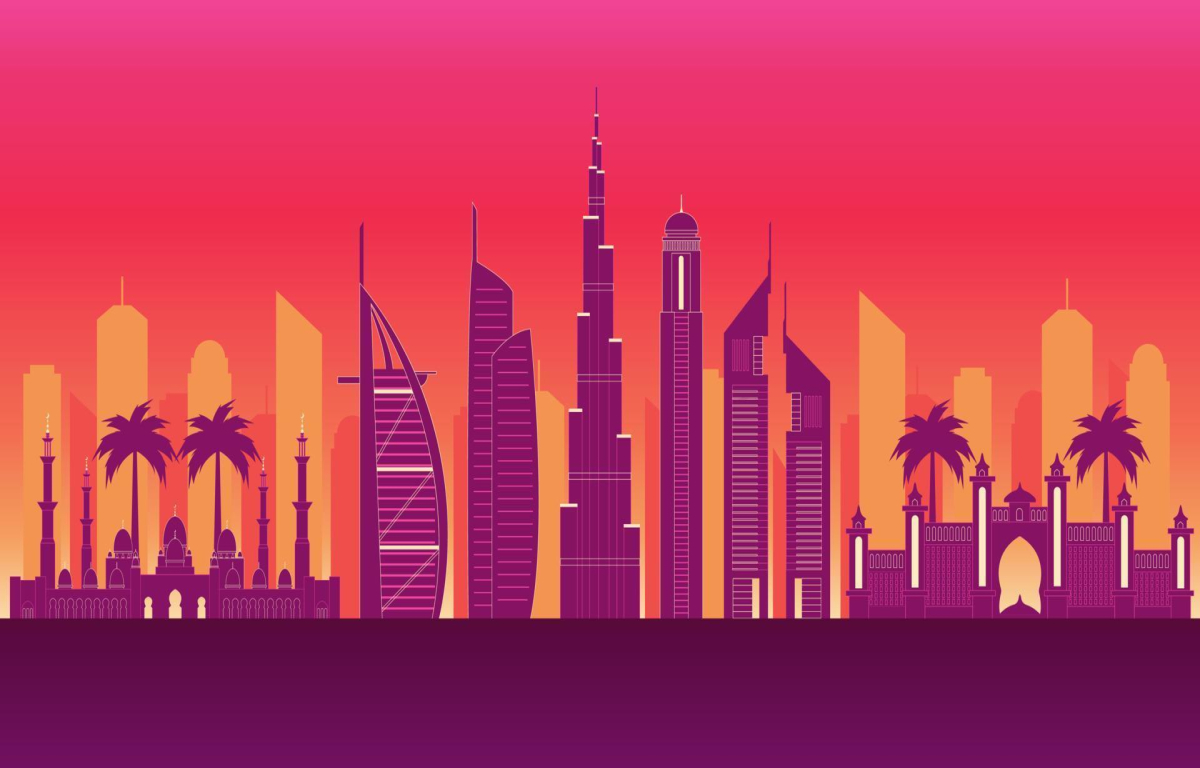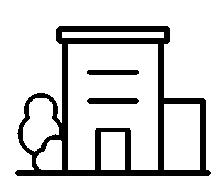Muhannad Alkilani, a 68-year-old visual artist from Damascus, Syria, dedicates his life to capturing the essence of his native country through art, restoring destroyed artworks to keep history alive.
"Art, once destroyed, can never be replaced, yet history repeats itself." — Clarence H. Burns. With every new brushstroke, lyrical melody, or graceful dance step, artists carry their existence forward through the art they create. Breathing life into their creations, artists pour every bit of heart and soul into their work, yielding beautiful pieces of art that they hope will live on forever.
But what happens when one suddenly loses their creative sanctuary, with no one to rescue them? What happens when this loss accompanies the loss of home, familiar faces, and the life they once knew? In the face of war, where life is seldom spared, preserving artistic and cultural heritage may seem like wishful thinking. However, amidst the life-changing chaos, the artwork once brought to life by the artist may become a pivotal means of breathing life back into them when despair looms large, and losing this connection can bring about a profound sense of loss and grief. Such was the feeling experienced by Muhannad Alkilani, a distinguished visual artist from Syria.
An Artist from Syria
An artist from Syria, Muhannad Alkilani, was born in Damascus in 1955. Growing up in an environment that didn't prioritise art, his passion for drawing emerged early, driven by a deep desire to imitate and create. "Art was my escape, my way to understand the world," Alkilani reflects. His determination led him to self-educate through books on drawing principles and by immersing himself in the art community.
Over the years, Alkilani honed his skills in various mediums, including pencil, charcoal, wood, watercolour, and oil. His works depicted Damascus's ancient neighbourhoods and historical sites, serene nature scapes, and, occasionally, replicas of renowned international artworks. Embracing a post-modern expressionist style, his art evolved into what is often referred to as '21st-century art' until the Syrian Civil War brought catastrophic changes to his life.
As his home and art workshop in Harasta, a suburb of Eastern Ghouta, were severely destroyed, he was suddenly forced to relocate. "I lost not just my home but also my sanctuary of creativity," he shares. The devastation of the war made it difficult to maintain his previous artistic production, leading to significant psychological, moral, and financial challenges.
Despite the hardships, Alkilani found solace in creating simple canvases and sketching in gardens and public places. "Art became my therapy, my way of coping with the chaos around me," he explains, adding how these small acts of creative expression helped him sustain his artistic spirit in times of deep distress.
Art & War
Artists caught in the throes of war endure immediate emotional upheaval, grappling with grief and profound loss as their creations are often intertwined with their identity and cultural heritage. This anguish is compounded by the trauma of witnessing the destruction of their homes and communities, breeding chronic stress, anxiety, and a profound sense of isolation.
"Unfortunately, the experience was far from ordinary; it was a catastrophic and terrifying event that destroyed both the place and humans. I had to flee for my life from the horrors of the events that unfolded and then find a safer place to settle," the artist recalls.
"It was a process of adapting and adjusting to the immense challenges in the new environment. There was some anticipation of returning to the devastated place, hoping to salvage whatever might have survived, but the possibilities were bleak."
The trauma and stress of displacement can hinder creativity, leading to long-term creative blocks, Alkilani mentions. Psychologically, the artist may even face an identity crisis, questioning their self-worth and artistic voice. "I had to suppress the anger and pain inside me to rise again and mend the wounds of my shattered soul, answering the call of eager fingers and brushes to paint anew on the canvas of hope for a brighter life," says Alkilani.
However, his experience is just one among many affected by the Syrian civil war, which has displaced millions, including artists whose works represent the cultural soul of their nation.
Erasing Identity
Throughout history, the deliberate destruction of cultural heritage has served as a devastating weapon of war, aiming not only to obliterate physical structures but also to erase cultural and historical identities. This practice carries profound implications, impacting not only the immediate population, including artists, but also the artistic legacy of future generations.
"It's well-known that artistic work cannot be replicated, and the loss of artwork cannot be compensated. Art is not just a passion; it's a way to keep our history alive," says Alkilani. "I strongly feel encouraged to urge organisations and individuals of influence to protect artworks vulnerable to harm. I hope to contribute through my experience and expertise to restoration projects."
As he witnessed the scenes and events of the conflict, Alkilani found his drawing style and artistic perspective undergoing a significant transformation. "The events of the Syrian war have deeply and profoundly impacted my artistic journey, with its images etched into my memory laden with experiences and suffering." Over the past twelve years, he has created numerous sketches that mirror the war's devastating effects on art and society.
"Often, I found myself influenced by the scenes and events I witnessed, leading to a noticeable impact on my drawing style and artistic perspective," he explains. His pen, once a tool for traditional representation, began to scatter lines and form tangled compositions.
"When I draw, it seems as though my pen scatters its lines and forms tangled compositions, attempting to express the chaotic and disturbed reality left by conflict," says Alkilani.
What Used to Be
In 2018, amidst the rubble and remnants of a once-lived life and the quiet stillness of war-torn Syria, the artist embarked on a journey of rediscovery. Returning briefly to his home, now a dangerous and unfamiliar place, he sought out what was still left of his lost artwork.
"After several years of displacement until 2018, following the government's control over the devastated areas, they permitted people to visit their homes," Alkilani recounted. "I rushed to check on dozens of different artworks I had created over the years of my productive life."
Amongst the debris, he encountered the scattered remains of his tools and fragments of his once-vibrant artworks. "I struggled to contain my emotions as I tried to navigate through the debris, grappling with feelings of grief and frustration. Despite the overwhelming, confusing emotions, I found two intact paintings covered in dirt and dust and three paintings hidden beneath the rubble."
"After extracting and wrapping them up, I left the place feeling disheartened, having lost hope of finding others. I couldn't hold back my tears," he adds.
Cultural reconstruction
Months later, Alkilani immersed himself in a new chapter of his artistic journey in Dubai. Settled in a new environment, the artist embarked on the meticulous process of restoring his salvaged artworks. "After retaining the damaged artworks since 2018, and considering their significant emotional symbolism to me, I had the opportunity to resettle in Dubai," he adds. "I committed myself to the theoretical study of art restoration online to piece my art back together, and then began implementing it on one of the paintings."
The process of restoring a painting involves several meticulous steps. "Some steps include cleaning with a broad brush, followed by scraping and combing the paint to remove any debris or impurities," says Alkilani. "Once the stability is confirmed, a layer of transparent glue adhesive is applied over the remaining paint. After drying the adhesive, cotton fabric is placed and ironed over the entire front surface of the painting to stabilise the old paint colours."
"Finally, the painting undergoes rehabilitation and colour restoration over approximately 150 working hours before a final transparent fixing varnish is applied for preservation," he explains.
The restoration process came with its artistic and emotional challenges. "On the artistic level, as it was my first experience, the restoration process proceeded slowly and with extreme caution," he adds. "However, with each successful step, I persevered with growing confidence in the next stage and with more courage."
"During the crucial stage of restoring the colours, I found great joy in the accomplishment, as if I were transported back to 2008, recalling memories of previous moments of achievement. There was a personal connection with warm nostalgia linking me to the characters of the artwork," says Alkilani.
A New Meaning
Earlier this year, an unexpected opportunity arose as his son gifted him an exhibition space at the 10th edition of World Art Dubai. It was a moment of personal and professional significance, as Alkilani got the prized opportunity to showcase his restored artworks to a global audience at the art fair. "Exhibiting my restored artworks at the World Art Dubai was significant for me personally and professionally," he noted. "On a personal and professional level, it was an important opportunity in terms of meeting with artists and critics from multiple countries and nationalities."
"Also, I cannot describe how proud I am of my son Tilad, who has always been and still is a source of moral and material support in all my steps and whose immense efforts have greatly impacted all my artistic achievements," he adds.
Through his art, Alkilani is a testament to the resilience of the human spirit in the face of adversity. Looking ahead, he sees art as a powerful force for healing and rebuilding communities affected by conflict. "By harnessing collective creativity, art can contribute to healing and rebuilding communities affected by conflicts," he asserts.
"Art can be a powerful contributor to the healing and rebuilding processes of communities affected by conflicts, through fostering creative expression, raising awareness, providing psychological and social support, and promoting community solidarity and cooperation."
The Journey of Restoring Lost Art
Alkilani's journey of reconstructing his damaged artworks was a meticulous and heartfelt process, reflecting his dedication to his craft and the emotional significance of his pieces. After resettling in Dubai and immersing himself in the theoretical study of art restoration online, Alkilani began the hands-on process with one of his cherished paintings.
Initial cleaning and preparation: The first step involved cleaning the painting with a broad brush to remove surface dirt, then scraping and combing the paint to clear away any loose particles.
Repairing tears: The painting was then hung on supports, where Alkilani sewed the tears with thin thread, ensuring the canvas was stable for further restoration.
Securing the canvas: He placed the painting face on a wide wooden table, prepared excess fabric beyond the work area, and adhered it with highly effective adhesive glue. This process was followed by ironing the back area with a hot iron to reinforce the bond.
Stabilising the paint: Ensuring the remaining paint's stability was crucial. A layer of transparent glue adhesive was applied to the surface.
Reinforcing the surface: Once the adhesive dried, a cotton fabric was ironed over the entire front surface of the painting. This step ensured the old paint colours were stable and secure.
Restoring the damaged area: Excess threads were removed, and a mixture of white zinc paste with transparent adhesive glue was carefully applied to the injured area.
Reviving the colours: The final step involved rehabilitating the painting by reviving the damaged colours. This intensive process took approximately 150 working hours and was completed with a final transparent fixing varnish to protect the restored artwork.
#art #heritage #dubaiart #uaenews #creativity #war #travelupdate #museumsindubai



